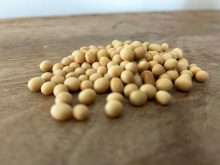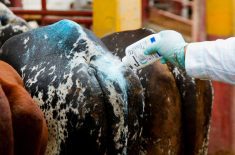Chicago | Reuters — The flesh-eating livestock pest New World screwworm has advanced closer to the U.S. border with Mexico, the U.S. Department of Agriculture said, prompting Washington to block imports of Mexican cattle just days after it allowed them to resume at a port of entry in Arizona.
Screwworms are parasitic flies whose females lay eggs in wounds on warm-blooded animals, usually livestock and wild animals. Once the eggs hatch, hundreds of screwworm larvae use their sharp mouths to burrow through living flesh, eventually killing their host if left untreated.
Read Also

Bird flu virus could risk pandemic worse than COVID if it mutates, France’s Institut Pasteur says
The bird flu virus that has been spreading among wild birds, poultry and mammals could lead to a pandemic worse than COVID-19 if it mutates to transmit between humans, the head of France’s Institut Pasteur respiratory infections centre said.
Why it matters: The U.S. Department of Agriculture has closed the border to Mexican cattle imports, reducing an already tight cattle supply.
Mexico reported screwworms about 370 miles south of the U.S. border in Ixhuatlan de Madero, Veracruz, on Tuesday, the USDA said in a statement late on Wednesday. The agency ordered the closure of livestock trade through southern ports of entry effective immediately.
“Closing the border isn’t just justified, it’s essential,” said Bill Bullard, CEO of U.S. cattle producers’ group R-CALF USA.
An infestation in the United States could add to further tightening supplies of cattle, which are at their lowest levels in decades, and also endanger other livestock and household pets.
The USDA suspended Mexican cattle importsin May after screwworm was detected about 700 miles from the U.S. border at farms in Oaxaca and Veracruz, Mexico.
The agency said last week that it would resume imports on Monday at a port of entry in Douglas, Arizona, as part of a phased reopening of the border because screwworms had not been moving north in Mexico.
Now, the USDA needs to see more progress in combating the pest in Veracruz and nearby Mexican states to reopen livestock ports on the southern border, Secretary Brooke Rollins said.
Screwworms were eradicated from the United States in the 1960s when researchers released sterilized male screwworm flies that mate with wild female screwworms to produce infertile eggs.
The USDA said last month that it would build a sterile fly dispersal facility in Hidalgo County, Texas, and consider a sterile fly production facility.
The agency should immediately begin work on a U.S. sterile fly production facility, said Colin Woodall, CEO of the National Cattlemen’s Beef Association industry group.
“The New World screwworm’s northward movement jeopardizes the safety of American agriculture,” he said. “We cannot wait any longer.”















